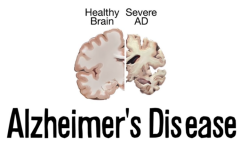By KM Diaz, | March 20, 2017

A severe gum infection is called periodontitis. It often damages the soft tissues and the structures that hold the teeth.
Several signs and complications have been associated with diabetes. A recent study explained its connection to a particular oral infection, the periodontitis, and may also be the first sign of the disease.
A severe gum infection is called periodontitis. It often damages the soft tissues and the structures that hold the teeth. Its prevalence is common and two times higher with 50 years old, and two to three times higher with diabetic patients than those who do not have the disease. It is said to be associated with uncontrolled diabetes that's why patients are more prone to infections and impaired wound healing.
Like Us on Facebook
A recent study suggests that periodontitis may be the early sign of diabetes. This can be applied as a means for pre-screening of diabetic patients. The study examines the HbA1c levels to verify the presence of prediabetes in participants with or without periodontitis using analysis of dry blood spots. Patients from Department of Periodontology of the Academic Centre of Dentistry Amsterdam (ACTA) diagnosed with periodontitis will be part of the treatment.
A total of 313 participants were part of the study; 78 patients had severe periodontitis, 109 controls did not have periodontitis, and 126 patients had moderate periodontitis.
The value of HbA1c was obtained using the analyzation of dry blood spots. The mean difference of HbA1c values and the predominance of prediabetes between the groups were also examined. Using the case definition of Centers for Disease Control and Prevention American Academy of Periodontology (CDC-AAP), the participants were categorized as enduring from periodontitis.
In the overall findings, 18.1 percent were speculated to have new diabetes among patients with severe periodontitis. While 9.9 percent of patients with moderate periodontitis, and 8.5 percent to healthy controls.
In conclusion, it is significant to focus on patients with existing severe periodontitis for the screening of prediabetes. Patients with periodontitis have a higher level of hbA1c than those who do not have the oral infection; hence, it may be the first sign of diabetes. The additional complication may occur but it can be prevented by recognizing periodontitis as the first sign at an earlier stage.
-
Use of Coronavirus Pandemic Drones Raises Privacy Concerns: Drones Spread Fear, Local Officials Say

-
Coronavirus Hampers The Delivery Of Lockheed Martin F-35 Stealth Fighters For 2020

-
Instagram Speeds Up Plans to Add Account Memorialization Feature Due to COVID-19 Deaths

-
NASA: Perseverance Plans to Bring 'Mars Rock' to Earth in 2031

-
600 Dead And 3,000 In The Hospital as Iranians Believed Drinking High-Concentrations of Alcohol Can Cure The Coronavirus

-
600 Dead And 3,000 In The Hospital as Iranians Believed Drinking High-Concentrations of Alcohol Can Cure The Coronavirus

-
COVID-19: Doctors, Nurses Use Virtual Reality to Learn New Skills in Treating Coronavirus Patients













